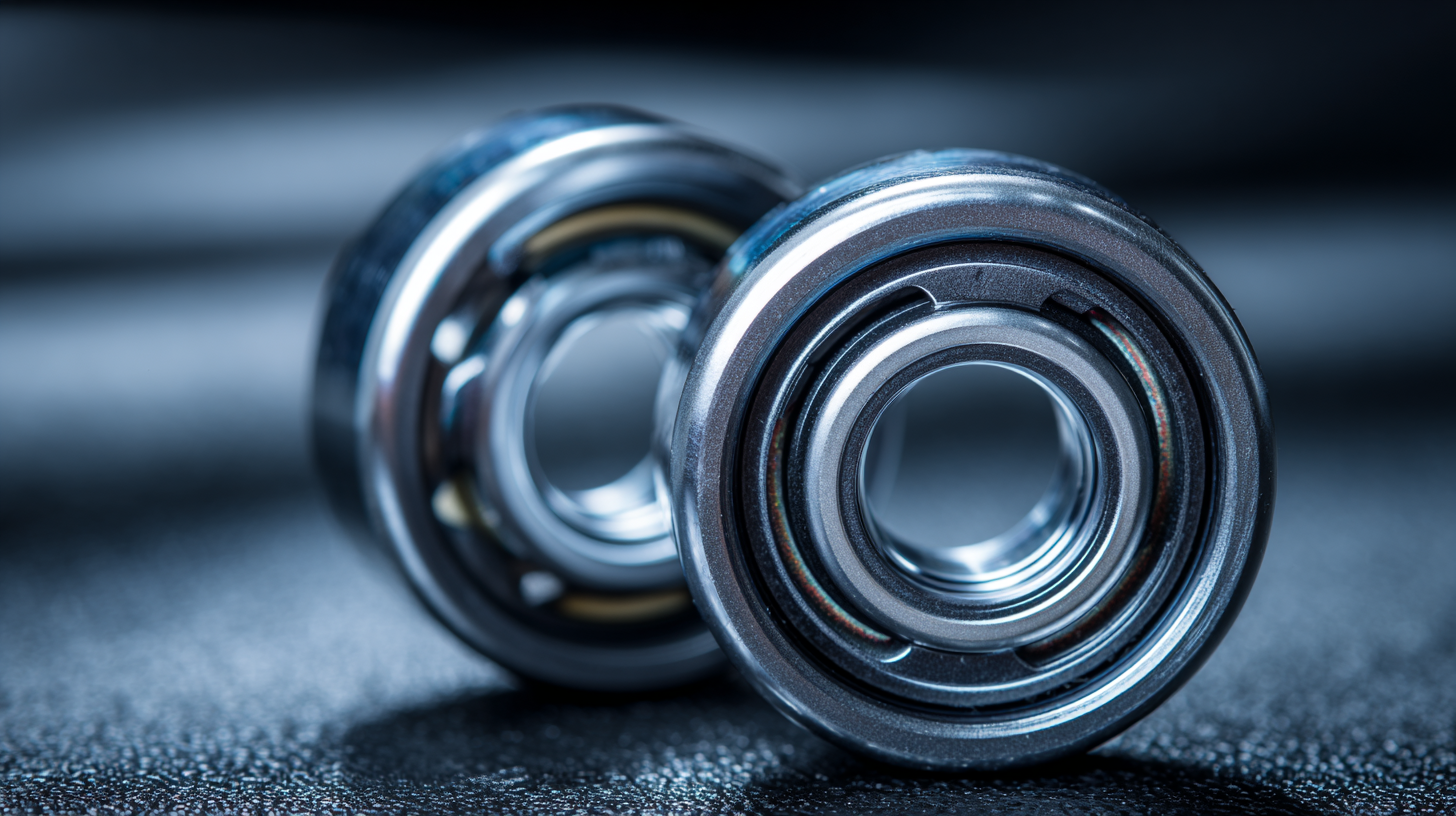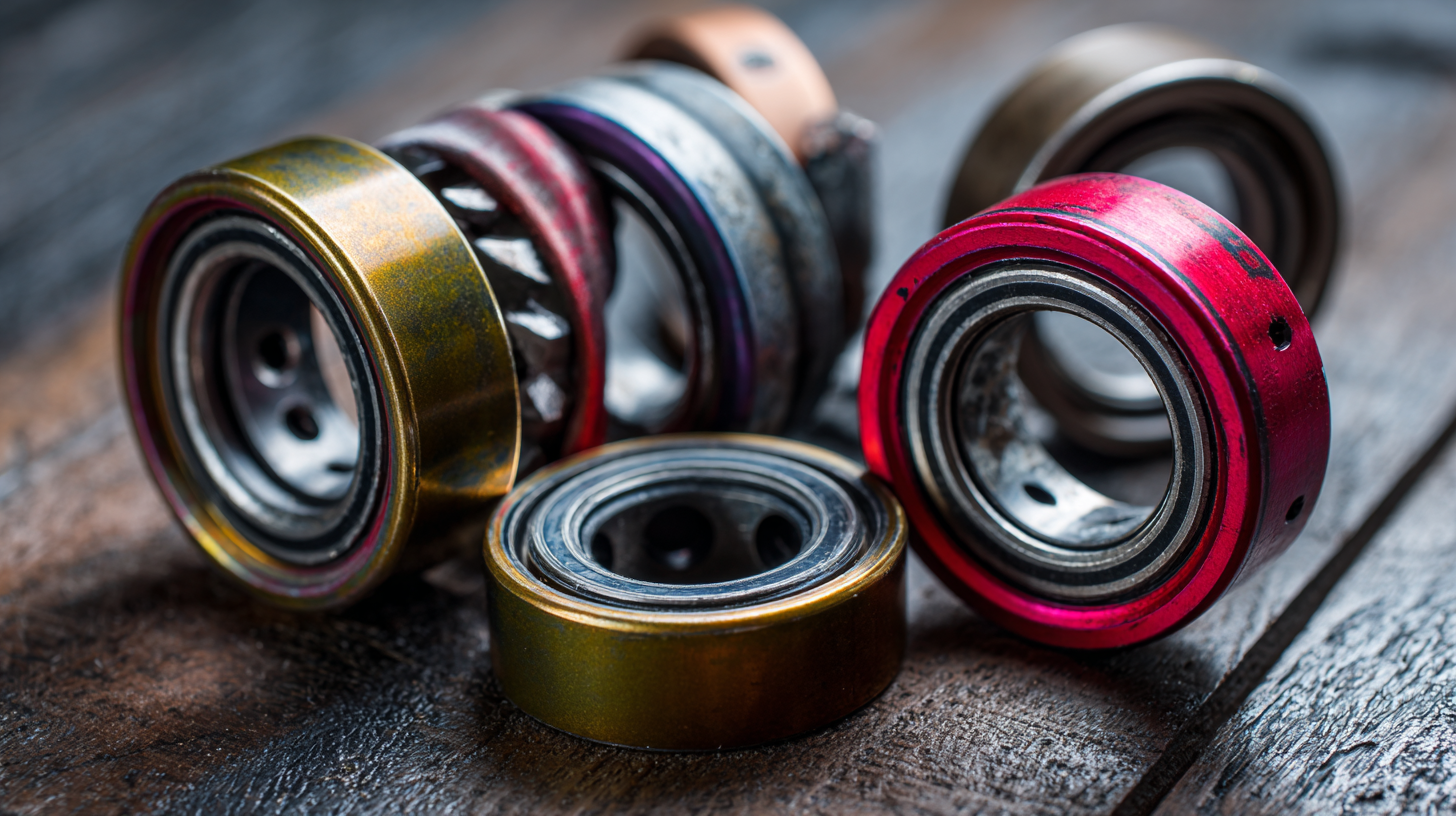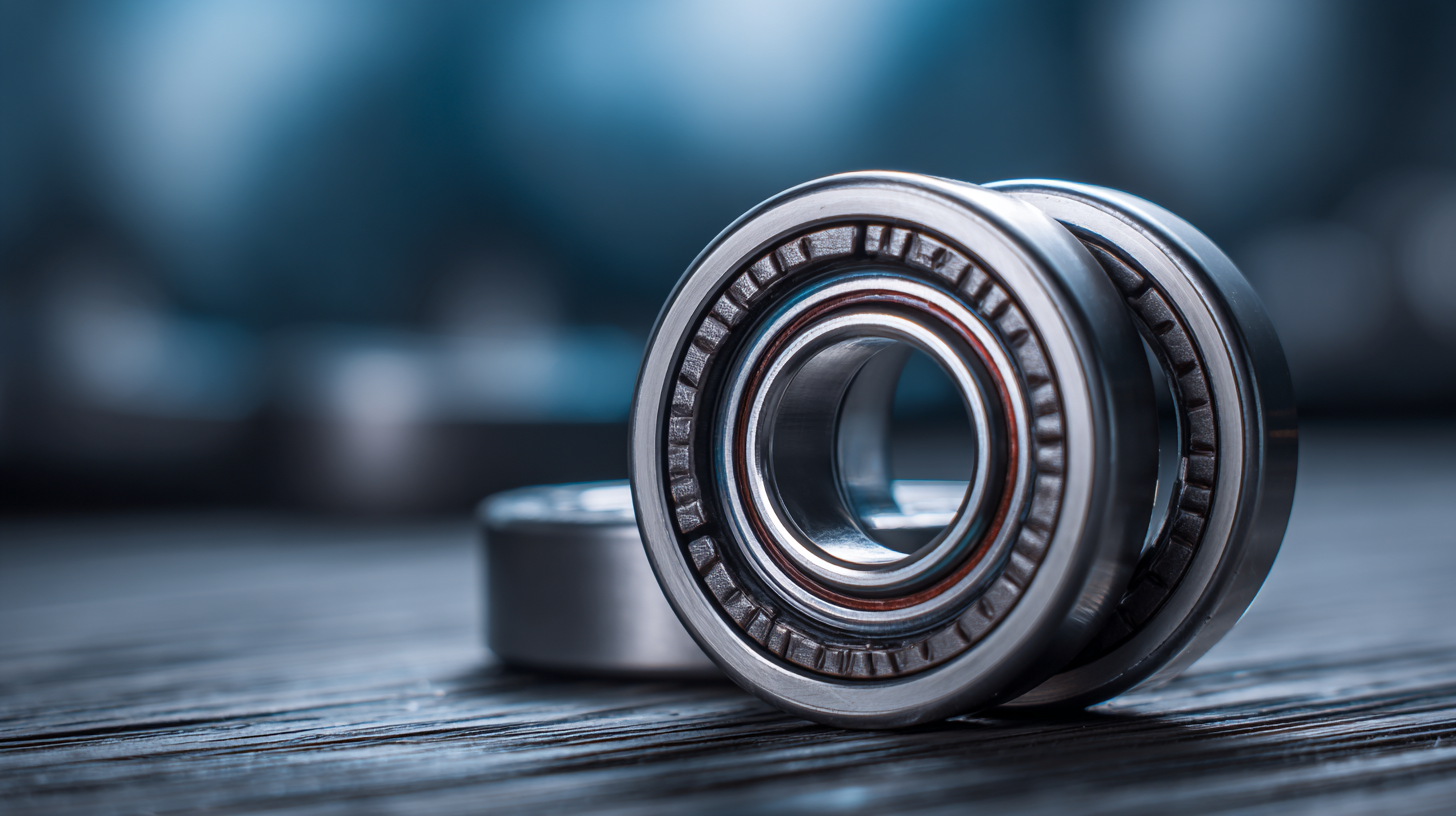7 Best Deep Groove Ball Bearings for Unmatched Performance
When it comes to ensuring efficiency and performance in various mechanical applications, deep groove ball bearings play a crucial role. These versatile components, known for their ability to handle both radial and axial loads, are the backbone of countless devices, from electric motors to automotive systems. In this blog, we will explore the 7 best deep groove ball bearings that offer unmatched performance. We'll delve into their unique features, materials, and applications, helping you make an informed decision whether you're a professional engineer or a DIY enthusiast. By understanding the various solutions available, you can optimize your projects and enhance the longevity and reliability of your machinery, all while benefiting from the superior qualities of deep groove ball bearings.

The Importance of Deep Groove Ball Bearings in Modern Machinery
 Deep groove ball bearings play a crucial role in modern machinery, offering high performance and reliability in various applications. These versatile bearings are designed to handle both radial and axial loads, making them ideal for use in electric motors, automotive components, and industrial machinery. Their ability to reduce friction and improve efficiency
Deep groove ball bearings play a crucial role in modern machinery, offering high performance and reliability in various applications. These versatile bearings are designed to handle both radial and axial loads, making them ideal for use in electric motors, automotive components, and industrial machinery. Their ability to reduce friction and improve efficiency
reduces energy consumption, ultimately enhancing the performance of machines.
When selecting deep groove ball bearings, it's essential to consider factors such as load capacity, material, and lubrication. Using high-quality materials can significantly prolong the life of bearings, while the right lubrication minimizes wear and tear. Always ensure that the bearing is appropriately sized for your application to prevent premature failure.
Tips for maintaining deep groove ball bearings include regular inspections for signs of wear, keeping the bearings clean and well-lubricated, and using protective seals to keep contaminants at bay. Additionally, always adhere to the manufacturer's specifications regarding load limits and operational speeds to maximize the bearing's lifespan and performance.
Key Performance Metrics for Evaluating Deep Groove Ball Bearings
When evaluating deep groove ball bearings, several key performance metrics come into play that can significantly influence their effectiveness in various applications. One of the foremost metrics is the load rating, which indicates the maximum load a bearing can withstand while maintaining optimal performance. This includes both dynamic load ratings, which affect the bearing's rotational functionality, and static load ratings that determine capacity when stationary. Understanding these ratings is critical to ensuring that the chosen bearing aligns with the specific requirements of machinery and equipment.

Another essential performance metric is the bearing's speed capability, expressed in terms of maximum allowable rotational speed. This factor is particularly important in applications involving high-speed rotation, where inadequate speed ratings can lead to overheating, premature wear, or failure. Additionally, factors such as material quality, lubrication type, and design variations play pivotal roles in the overall performance and longevity of deep groove ball bearings. By closely examining these metrics, users can select the right bearings that promise unmatched efficiency and durability in their respective operations.
Comparative Analysis of Material Types Used in Deep Groove Bearings
When considering deep groove ball bearings, understanding the materials used in their construction is essential for achieving unmatched performance. The most common materials include chrome steel, stainless steel, and ceramic. Chrome steel is favored for its high load capacity and durability, making it ideal for heavy-duty applications. Stainless steel, on the other hand, offers excellent corrosion resistance, which is crucial in environments exposed to moisture or chemicals. Ceramic materials, while typically more expensive, provide significant advantages in terms of reduced friction and lightweight properties, suitable for high-speed applications.
When selecting deep groove ball bearings, it’s vital to consider the operating environment. For instance, if your application involves exposure to corrosive elements, opting for stainless steel may extend the lifespan of the bearings. Additionally, you should evaluate the load and speed requirements; heavier loads may necessitate the robust nature of chrome steel, while precision machinery could benefit from the lower friction characteristics of ceramic bearings.
Tip: Always check for additional features such as seals or shields in the bearing design, which can help protect against dirt and lubrication loss, ultimately enhancing performance and longevity. Regular maintenance and choosing the right material based on specific needs can lead to significant improvements in operational efficiency.
Performance Comparison of Different Material Types in Deep Groove Ball Bearings
How Lubrication Enhances the Lifespan and Efficiency of Deep Groove Bearings
When it comes to maximizing the performance of deep groove ball bearings, proper lubrication plays a crucial role. Lubricants create a protective film between moving parts, reducing friction and wear. This not only enhances efficiency but also prolongs the lifespan of the bearings. Selecting the right type of lubricant is essential, as different applications may require specific properties such as high temperature resistance or moisture tolerance. Regular checks and maintenance ensure that the lubrication remains effective, preventing premature failure and costly downtime.
In addition to reducing friction, effective lubrication helps to dissipate heat generated during operation. Over time, excess heat can lead to thermal degradation of the bearing materials, compromising their integrity. By maintaining optimal lubrication conditions, operators can ensure smoother operation and better reliability. Furthermore, modern lubricants often come with additives that can help in minimizing contamination and oxidation, further enhancing the performance of deep groove ball bearings in various industrial settings. Investing time in proper lubrication practices is vital for achieving unmatched performance and operational efficiency.
Industry Applications Where Deep Groove Ball Bearings Excel
Deep groove ball bearings are renowned for their versatility and superior performance in various industrial applications. They are particularly effective in high-speed operations, making them essential in sectors such as automotive, aerospace, and manufacturing. In automotive applications, for instance, deep groove ball bearings are used in engines, transmissions, and wheels, ensuring smooth operation and reduced friction. Their ability to handle both radial and axial loads makes them an ideal choice for these demanding environments.
When selecting deep groove ball bearings, it’s crucial to consider several factors to maximize their efficiency. First, always choose the right size and material to match your specific application—this often means high-quality steel or ceramic options for enhanced durability. Second, regular maintenance is key. Implementing a routine lubrication schedule can significantly extend the life of your bearings and maintain optimal performance. Lastly, pay attention to the operating environment, as extreme temperatures or exposure to contaminants can hinder performance.
In industries like aerospace, where precision and reliability are paramount, deep groove ball bearings excel by providing stable performance under varying loads and speeds. They are widely used in rotor systems, landing gears, and control surfaces, showcasing their critical role in ensuring safety and efficiency in flight operations. Investing in the right bearings can lead to impressive improvements in system reliability and longevity.